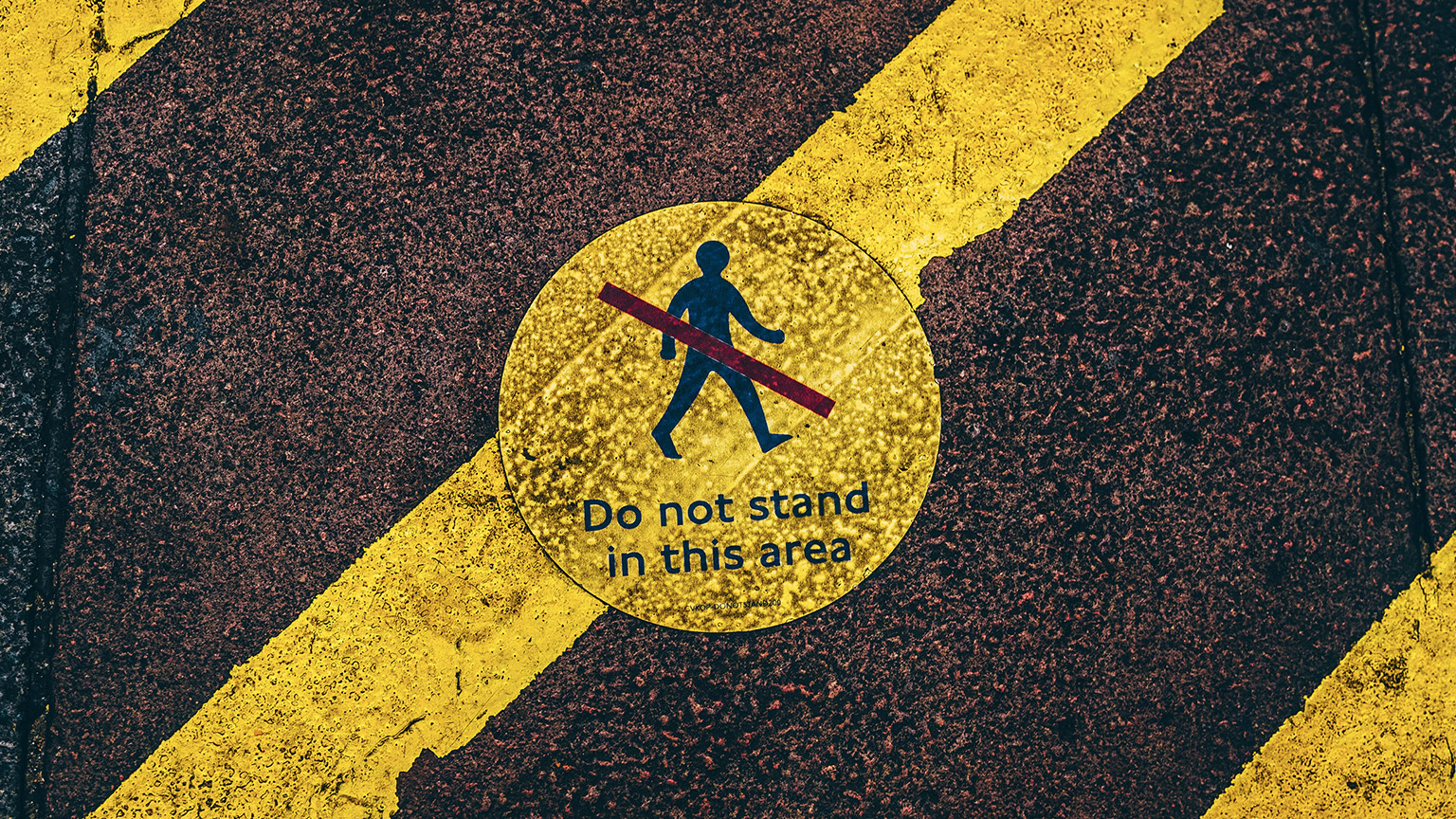Safety signs are an essential component of an effective workplace safety strategy in an animal care facility. They protect staff, volunteers, visitors, and animals by providing clear, immediate, and accessible safety information. By enhancing awareness, preventing accidents, ensuring compliance, promoting safe practices, guiding emergency responses, improving communication, and reinforcing a culture of safety, these signs contribute significantly to a safe and efficient working environment.
Why Are Safety Signs Important?
- Enhancing Awareness - Safety signs play a crucial role in raising awareness about potential hazards in an animal care facility. They help inform staff, volunteers, and visitors about specific dangers associated with handling animals, using equipment, or navigating certain areas.
- Preventing Accidents and Injuries - By clearly indicating risks such as slippery floors, biohazard areas, or aggressive animals, safety signs can prevent accidents and injuries. They serve as constant visual reminders to take necessary precautions and follow safety protocols.
- Facilitating Compliance with Regulations - Safety signs ensure the facility complies with occupational health and safety regulations. Compliance not only avoids legal penalties but also demonstrates a commitment to maintaining a safe environment for both humans and animals.
- Promoting Safe Handling Practices - In an animal care facility, proper handling of animals and equipment is vital. Safety signs provide instructions on safe handling techniques, reminding staff to use personal protective equipment (PPE), follow hygiene protocols, and handle animals with care to prevent bites, scratches, and zoonotic disease transmission.
- Guiding Emergency Procedures - In case of emergencies such as fires, escapes, or medical incidents, safety signs guide individuals to emergency exits, first aid stations, and evacuation routes. Clearly marked emergency procedures ensure a swift and organized response, minimizing harm and chaos.
- Improving Communication - Safety signs overcome language barriers and literacy levels by using universally recognized symbols and colours. This ensures that everyone, regardless of their background, understands the essential safety information.
- Reinforcing Safety Culture - The presence of safety signs throughout the facility reinforces the importance of a safety-first mindset. It encourages everyone to prioritize safety in their daily tasks, fostering a culture where health and safety are integral to the facility’s operations.
Watch
There are many signs you will need to familiarise yourself with as you build on your experience. The signs have been divided into the following categories to determine the level of relevancy.
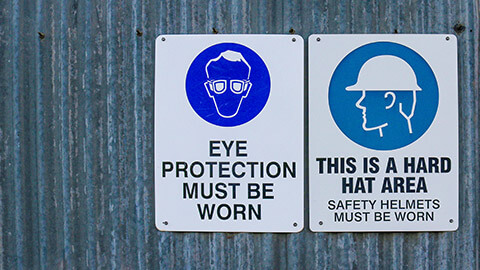
Mandatory Signs
Mandatory signs specify instructions that must be carried out. Symbols or pictures are depicted in white on a blue circular shape, and the sign wording will be black on a white background. Mandatory signs are usually used at warehouses, construction, building and mine sites.
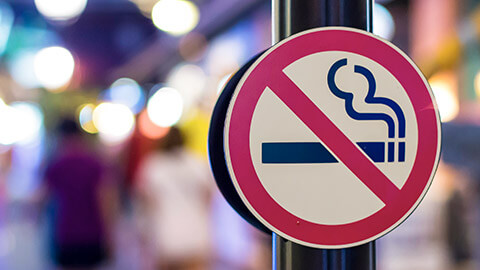
Prohibition Signs
Prohibition signs specify behaviour or actions which are not permitted. They have a universally recognised red circle with a diagonal line through it, and the symbol or picture behind it depicting the prohibited item will usually be black. If the wording is required, it is in black lettering on a white background.
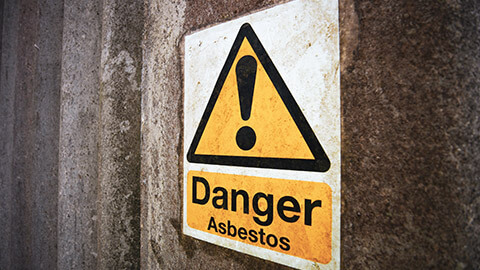
Warning Signs
Warning signs warn of hazards or hazardous conditions that are not likely to be life-threatening. The hazard depiction should be black on a yellow/orange background, and a black triangle will be depicted around the depiction. If the wording is required, it will be in black lettering.
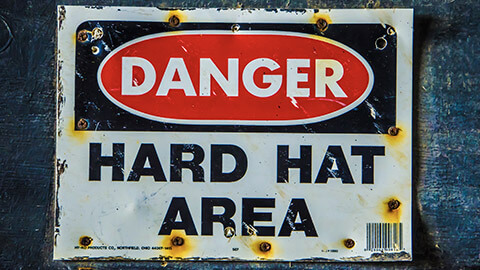
Danger Signs
Danger signs are used as a warning when a hazard or hazardous condition is likely to be life-threatening. The word Danger is featured inside a red oval with a white border which is inside a black rectangle.

Safety Signs
In a similar manner to warning signs, safety signs may also be used as a reminder of potentially dangerous situations throughout the workplace. The dangerous situation does not have as high a risk factor as situations depicted in warning signs; however, they do have the potential to cause injury or incident.
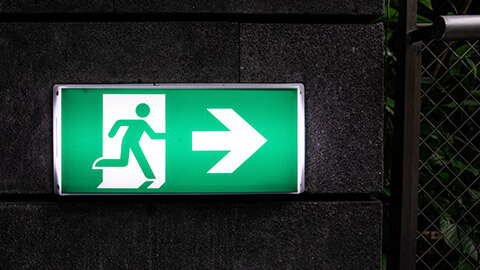
Emergency Information Signs
Emergency information signs help people find the location of, or directions to, emergency facilities, equipment or exits. They have a green background with white writing and an icon or image.
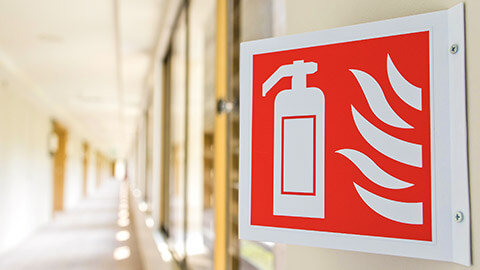
Fire Signs
Fire signs indicate the location of fire fighting equipment such as extinguishers, fire hoses or fire blankets. They have a red background with a white icon or image and white writing.
What kind of safety signs may you encounter at work?
- Flammable Materials
- Biohazard
- Slippery Floor
- Watch your step
- Radiation
- Toxic
Safety signs may be found throughout the animal care facility. Some examples of where signs may be found include:
- on the wall next to machinery for example, the radiation sign might be located near an Xray machine set up depending on the animal care facility
- slippery floor signs to be placed if there is a spill in the facility
- Toxic signs might be located on a locked cupboard or where chemicals are stored if there is a dedicated section/ area.
- The flammable material sign might be located around anywhere there is a potential fire hazard, like chemicals or equipment/ machinery.
Other Safety Signs you may encounter during work
- First Aid Kit
- Exit/ Emergency Exit Sign
- Do Not Feed Animals
- Wildlife Warning
- Livestock Warning
- Fire Extinguisher location
- Caution Wild Animals
- Lifting hazards
Safety signs are crucial in ensuring a safe working environment, especially in settings where animals are cared for. These signs are designed to communicate important safety information quickly and clearly. Below are some common safety signs you might encounter in the animal care industry, along with their explanations and corresponding images.
You may encounter sector-specific signs and some generic ones that you may have seen in the outside world. Especially with how vast the animal care sector is and the different types of facilities you may work in, there are various levels of risk and safety signs you may encounter.
Below are some more examples of signs and their meanings to help you:
Mandatory Signs
These signs indicate actions that must be taken to ensure safety.
- Wear Protective Gloves Sign: Indicates that protective gloves must be worn in the area to prevent exposure to hazardous substances or animal bites.
- Wear Eye Protection Sign: Alerts staff to wear eye protection when working with chemicals, machinery, or in areas with a risk of eye injury.
Prohibition Signs
These signs indicate actions or behaviours that are not allowed.
- No Smoking Sign: Indicates that smoking is prohibited in the area, which is important in environments with flammable materials or where animal health could be compromised.
- No Entry for Unauthorized Person Sign: Restricts access to certain areas, such as veterinary rooms or animal quarantine zones, to authorized personnel only
Hazardous Substances Signs
These signs indicate the presence of hazardous substances and inform about necessary precautions.
- Corrosive Material Sign: Indicates that the area contains corrosive materials that can cause severe burns or damage to skin and eyes.
- Flammable Material Sign: Warns of the presence of flammable substances, indicating that open flames or sparks should be avoided.
Animal Specific Signs
These signs provide specific instructions or warnings related to animals.
- Aggressive Animal Sign: Alerts staff to the presence of animals that may exhibit aggressive behaviour, advising caution.
- Zoonotic Disease Warning Sign: Warns of the potential for zoonotic diseases (diseases that can be transmitted from animals to humans) and the need for protective measures.
Bushfire
To alert staff, visitors, and volunteers about the current bushfire risk level and necessary precautions.
- Fire Danger Rating Sign: Displays the current fire danger level (e.g., Low, Moderate, High, Extreme, Catastrophic) to inform everyone of the potential bushfire risk and any necessary actions, such as evacuation readiness.
- Evacuation Route Sign: Indicates the safest and quickest route to evacuate the premises in case of a bushfire.
Flood Hazard/ Warning
To warn of areas prone to flooding and guide actions during a flood event.
- Flood Zone Sign: Identifies areas that are at risk of flooding, particularly during heavy rain or storm events. This could include low-lying animal enclosures or storage areas.
- High Ground/Assembly Point Sign: Directs people to higher ground or designated safe zones within the facility during a flood event.
Extreme Weather Sign
To alert and inform about the actions to take during extreme weather events, such as heatwaves, storms, or cold snaps.
- Extreme Heat Warning Sign: Advises on precautions during high temperatures, such as ensuring animals have access to water, shade, and adequate ventilation. It may also direct staff to areas where animals and people can cool down.
- Storm Shelter Sign: Indicates the location of safe areas or shelters that can be used during severe storms, including heavy winds or hail.
Wildlife and Safety Signage
Protect wildlife and humans by alerting them to potential dangers, such as animal movement or interactions during extreme weather conditions.
- Wildlife Crossing Sign: Alerts drivers and pedestrians to areas where animals may be moving, especially during weather events that may drive wildlife to seek higher ground or safer areas.
- Do Not Approach Animals Sign: Warns visitors and staff not to approach or handle animals during stress-inducing events like bushfires or flooding, as they may be more aggressive or scared.
